Recipe Overview
Why you’ll love it: It might not taste like real pasta but spaghetti squash is still a great low-carb stand-in! Here’s how to cook spaghetti squash in the oven for long, perfect (not soggy!) strands.
How long it takes: 40 minutes to an hour (depending on how it’s cut)
Equipment you’ll need: sharp knife, parchment paper, baking sheet
Servings: 1 squash
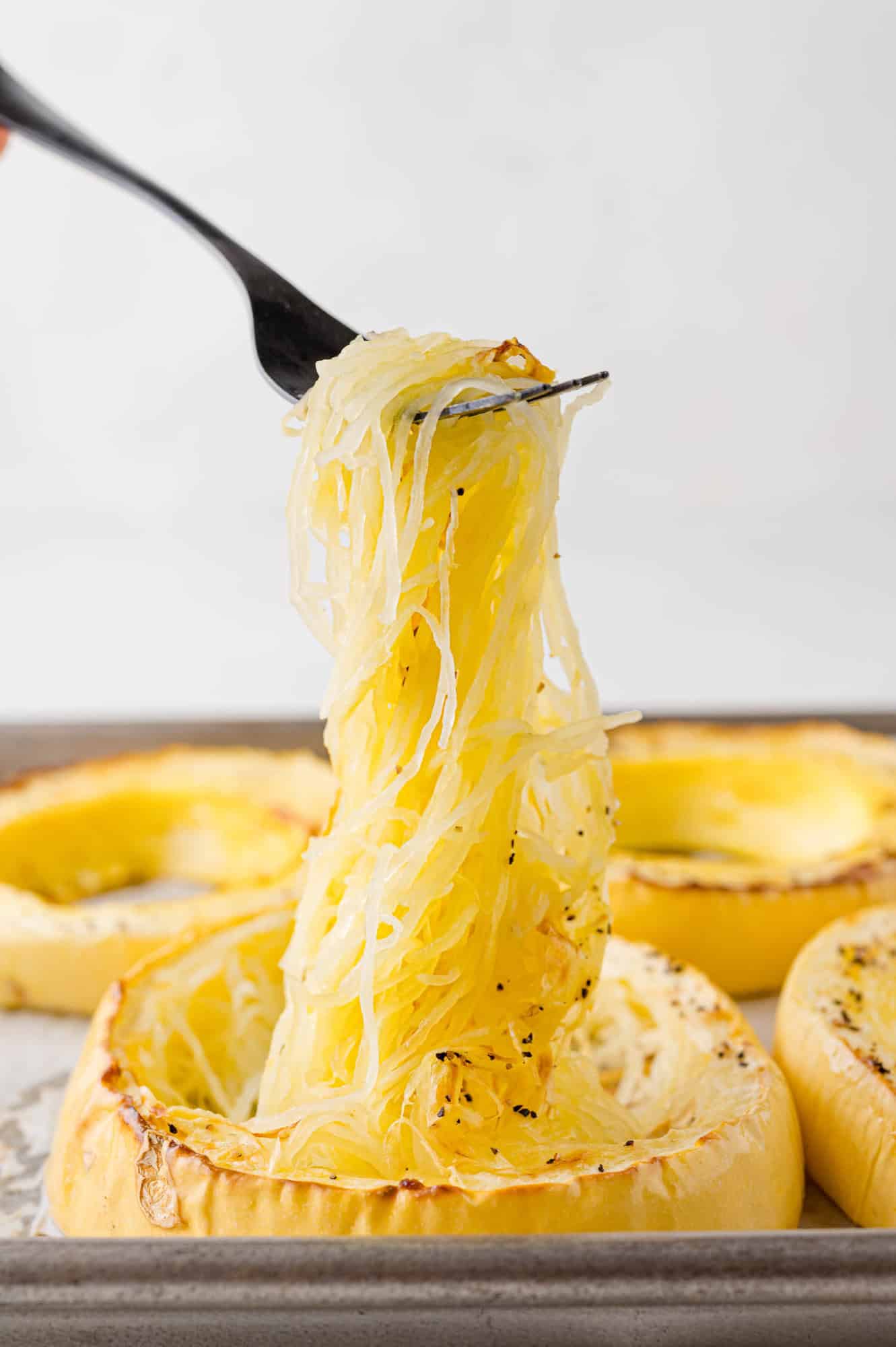
Pin this now to find it later
Pin ItWhen it comes to cooking spaghetti squash, you have options. There’s slow cooker spaghetti squash for a hands-off method, Instant Pot spaghetti squash when you need it lickety-split, but if you want the BEST spaghetti squash, I’ll be honest: cut squash baked in the oven is the way to go.
Because the oven is a drier heat, you get more caramelization and less moisture when you’re cooking cut squash, which means more flavorful spaghetti squash strands.
Baked Spaghetti Squash
Still practically effortless. While it does take a little more time and effort than the slow cooker and Instant Pot methods, don’t be mistaken: this method for how to bake spaghetti squash in the oven is still easy as can be.
The best squash for saucing up. Because cut spaghetti squash isn’t as soggy as other cooking methods, it holds sauces better and doesn’t water them down. If you have a thicker sauce, it’s not a deal-breaker, but for something that tends to be a bit thinner, like jarred pasta sauce, you’ll appreciate the drier option.
Low-carb pasta alternative—and more. Spaghetti squash is most well-known as a stand-in for traditional spaghetti or pasta, but it also works as a swap for rice and other grains that you’d use as a base for serving another recipe or for soaking up a sauce. I often serve spaghetti squash with Parmesan and herbs as a side dish.
Recipe Tip
Squash is very hard to cut through, so here’s a little tip. Poke a few holes in the peel with a sharp knife (this is to release pressure), and then microwave for 3 to 5 minutes. Let cool, and then cut. Microwaving the squash softens the peel and makes it easier to slice through.
Ingredient Notes
- Spaghetti squash: You’ll need to cut the spaghetti squash if you’re cooking halves or rings, but you do not need to peel it. (You’ll discard the skin after cooking.) I still recommend washing it well to keep your knife from transferring bacteria from the skin to the flesh while cutting.
- Olive oil: This helps the squash brown nicely in the oven.
- Salt and pepper: To enhance the flavor of the finished cooked spaghetti squash.
Did you know?
If you held the squash on its end with the stem facing up, the strands of spaghetti squash run horizontally in rings around the squash. When you cut the squash top to bottom (stem to end), it cuts the strands in half.
Cutting the squash in rings or horizontally across the middle will yield the longest, most spaghetti-like strands.
How to Make Baked Spaghetti Squash
For all methods
Preheat your oven to 400ºF, scrub the squash, and line a baking sheet with parchment paper.
To Cook in Rings
Use a sharp chef’s knife to cut the squash into 1-inch rings. (It can help to turn the squash a quarter-turn each time you cut a ring; it’s natural for your knife to angle a bit as you cut and this helps keep your cuts a bit more even despite this.)
Scrape out the seeds, spray or rub the rings with oil, then season with salt and pepper. Set on the prepared baking sheet and bake for 40 minutes, or until tender.
Cool slightly, then use a fork to scrape the flesh into strands.
This is my preferred method, provided I have the time and energy to slice the squash into rings. It yields perfect strands of spaghetti squash every time and won’t leave you with soggy “noodles.”
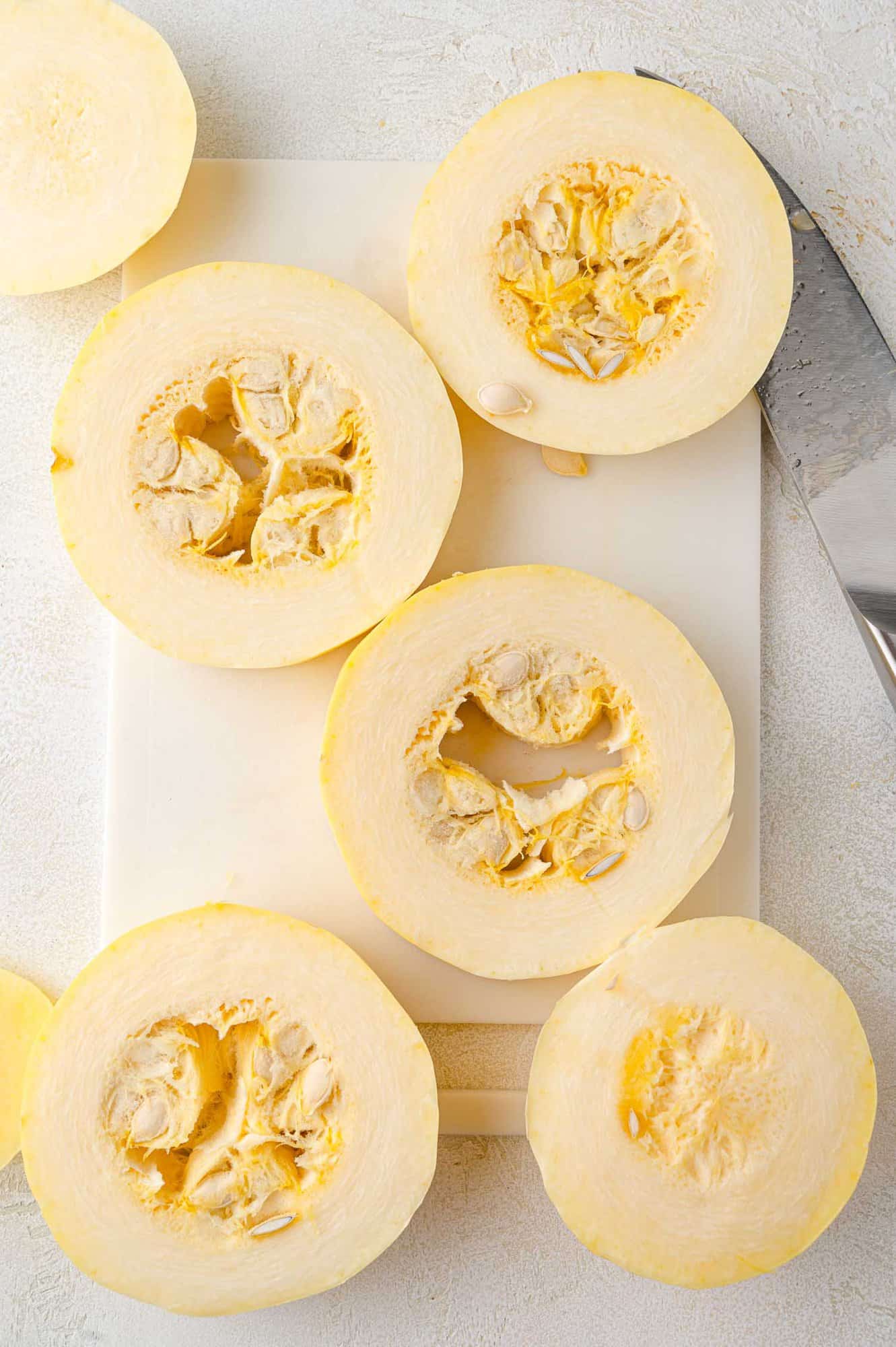

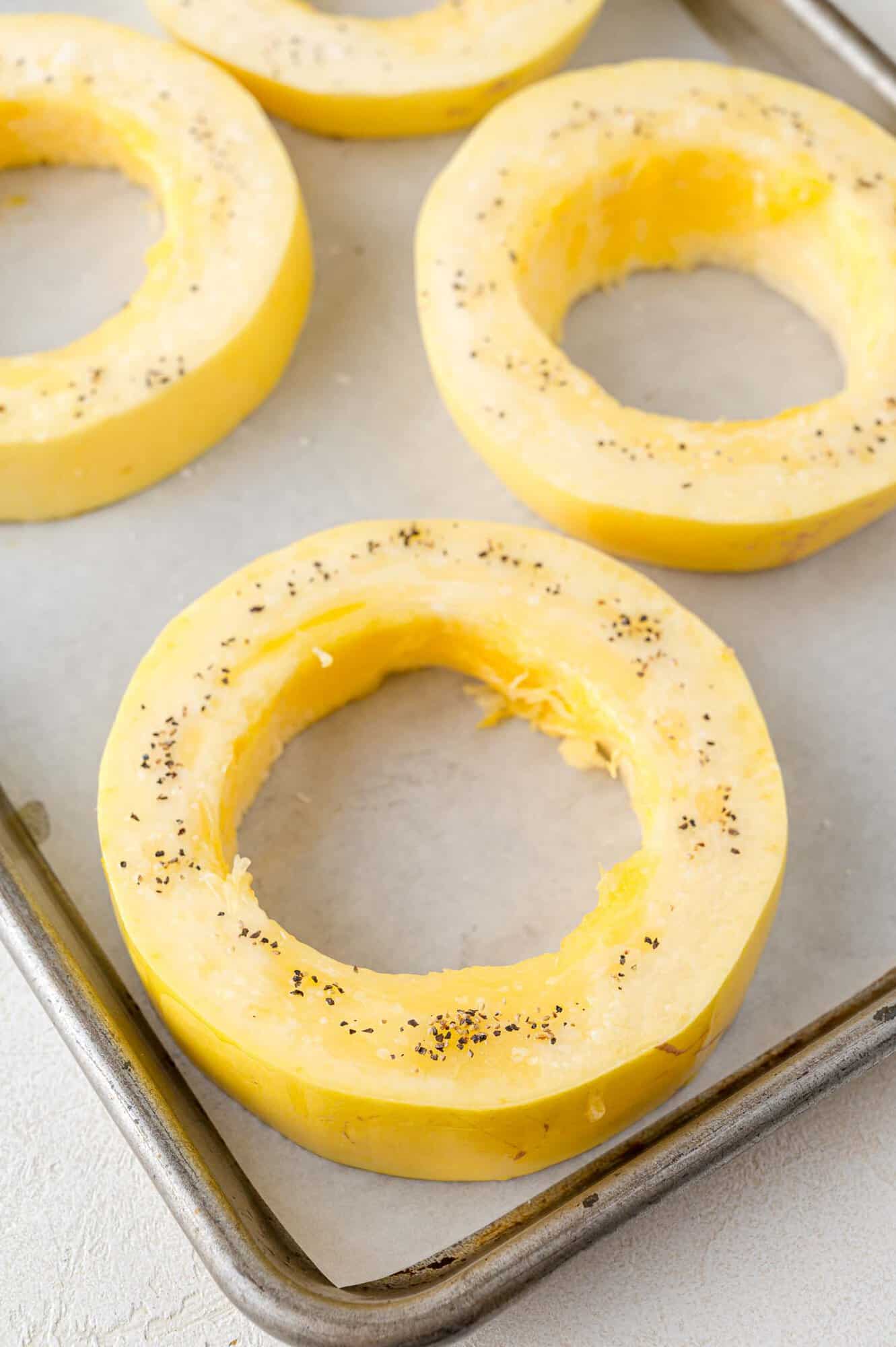
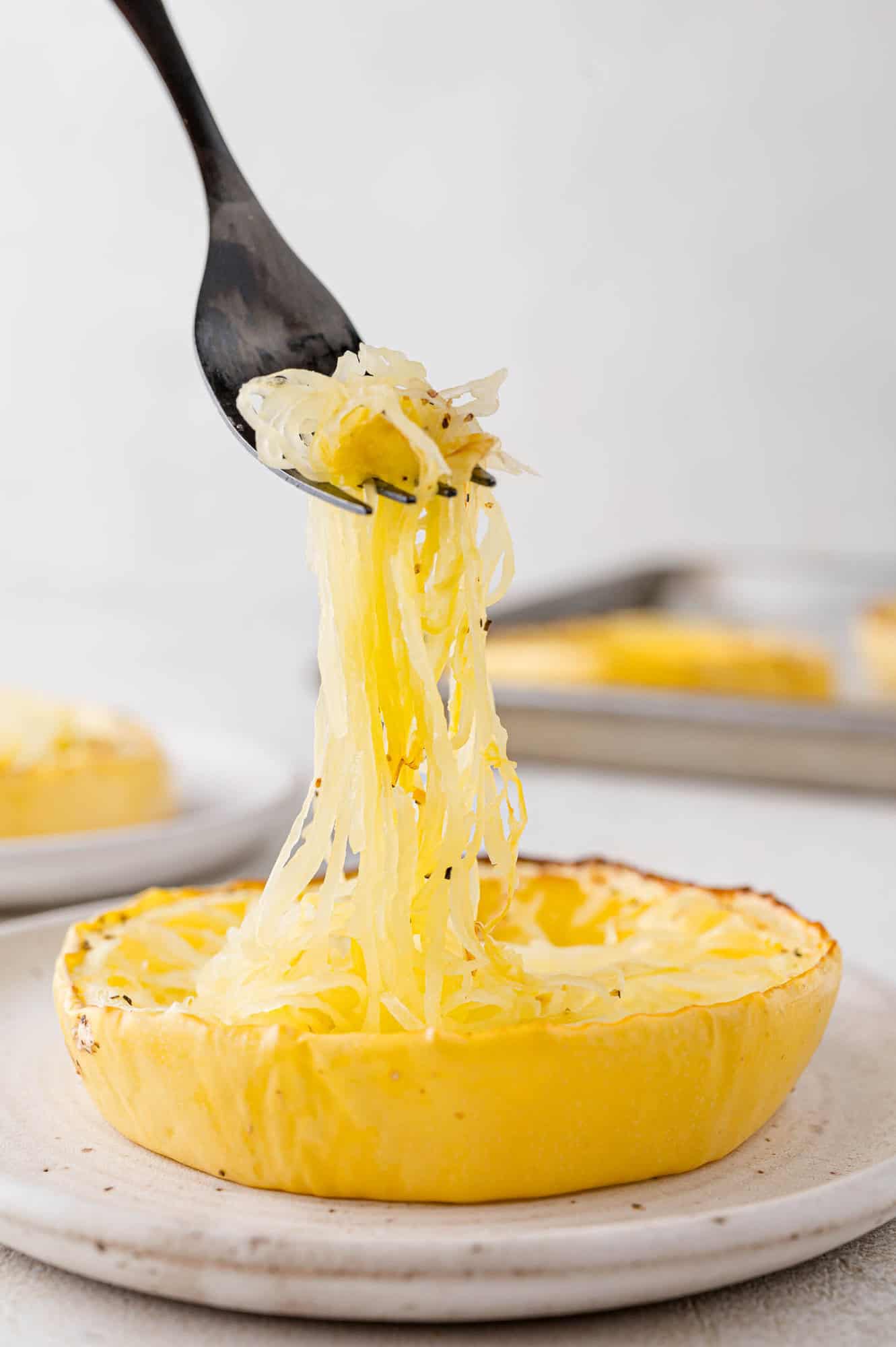
To Bake Whole
Use a knife to pierce holes all over the squash so the steam inside can escape.
Set the squash on the prepared baking sheet and roast until a knife slides in easily, flipping it over at the halfway point (around 30 minutes). It should take about an hour, but the cooking time can depend on the squash size.
Let the squash cool until you can handle it comfortably, then slice it in half. (You can cut it stem-to-end or crosswise, depending on the size of strands you want.)
Scoop out the seeds with a spoon, then use a fork to separate the strands.
This method is quite straightforward and arguably the most well-known method of cooking squash. The squash steams on the inside, yielding softer, more watery spaghetti squash.
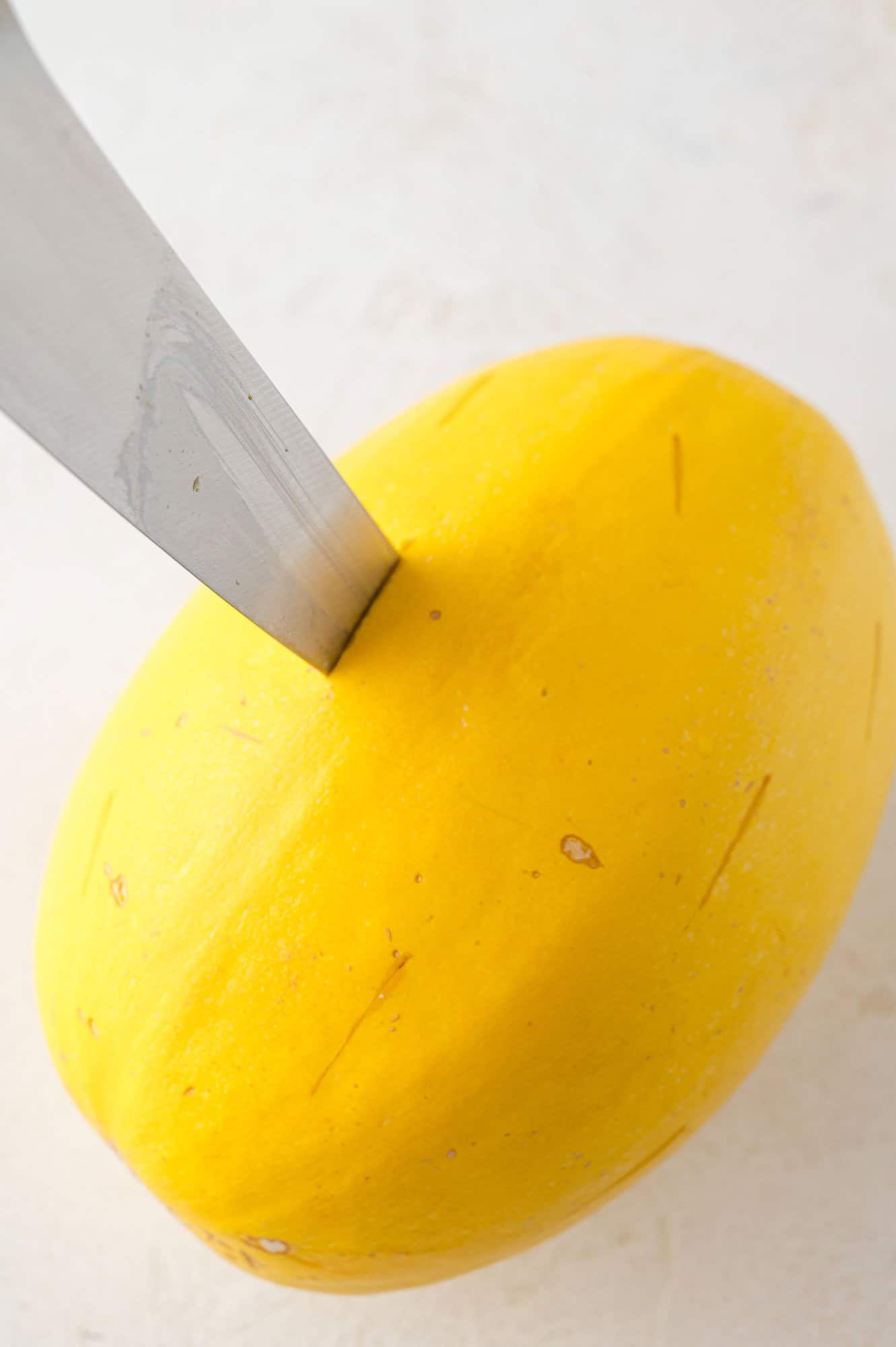
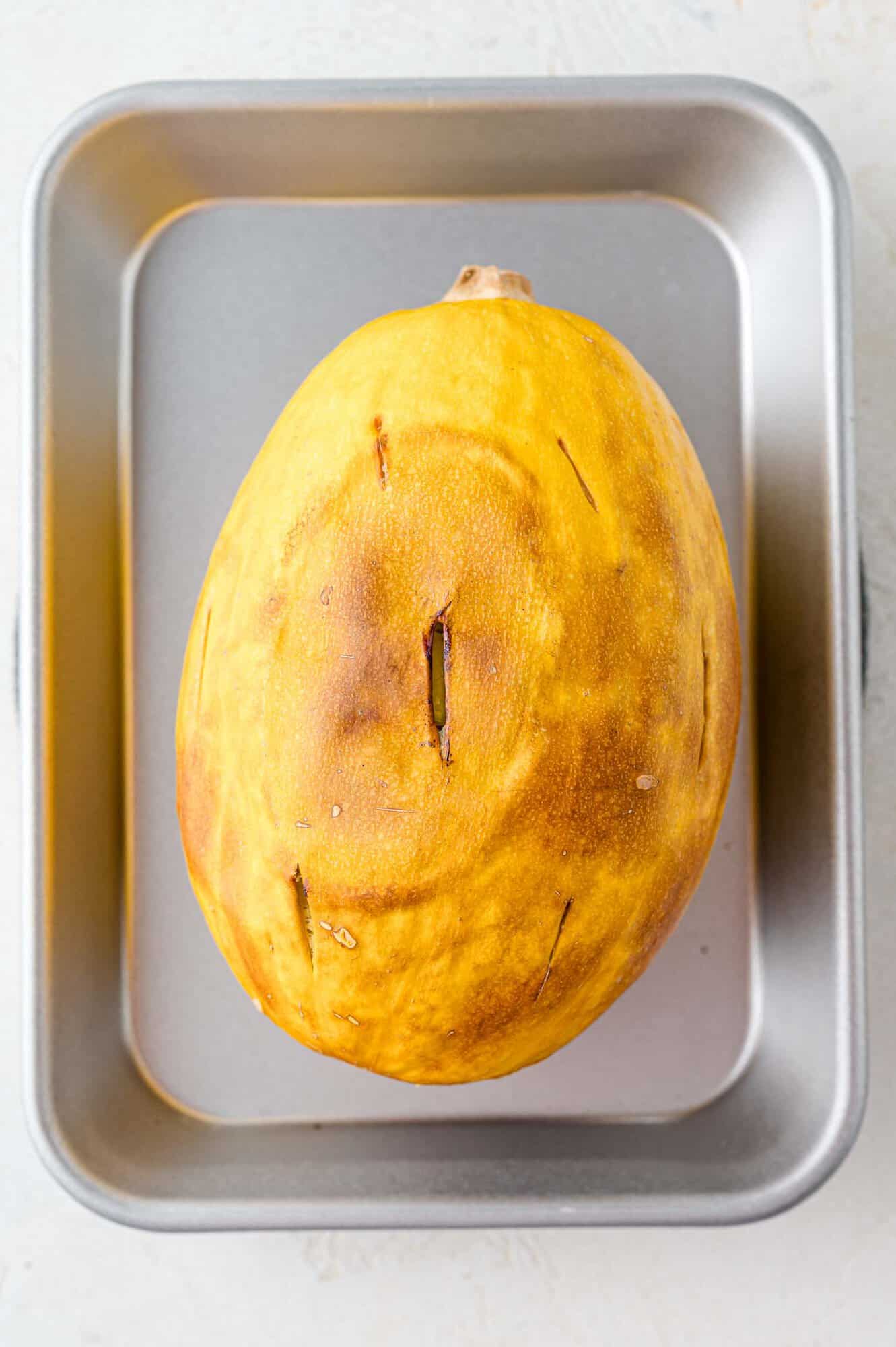
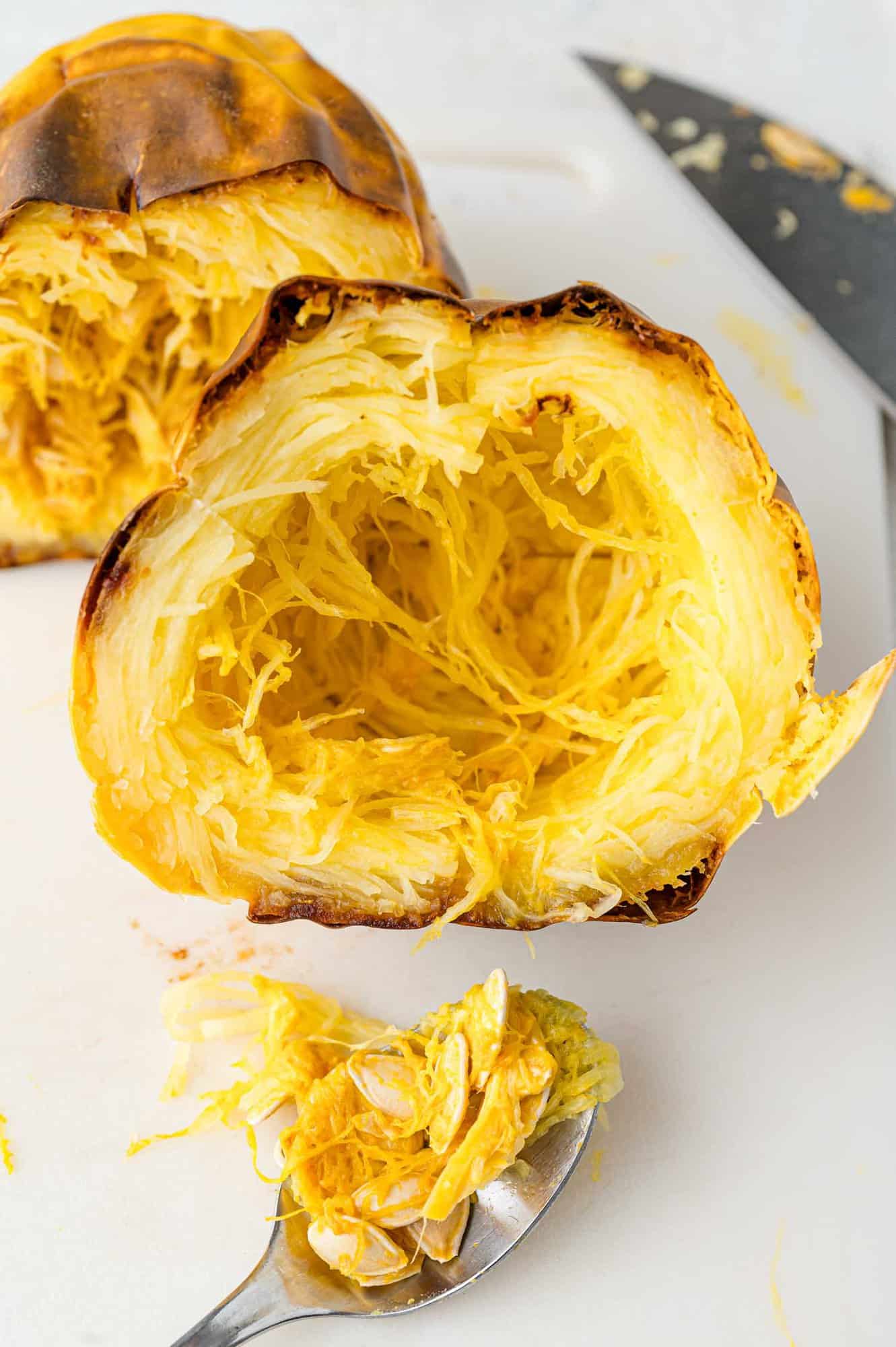
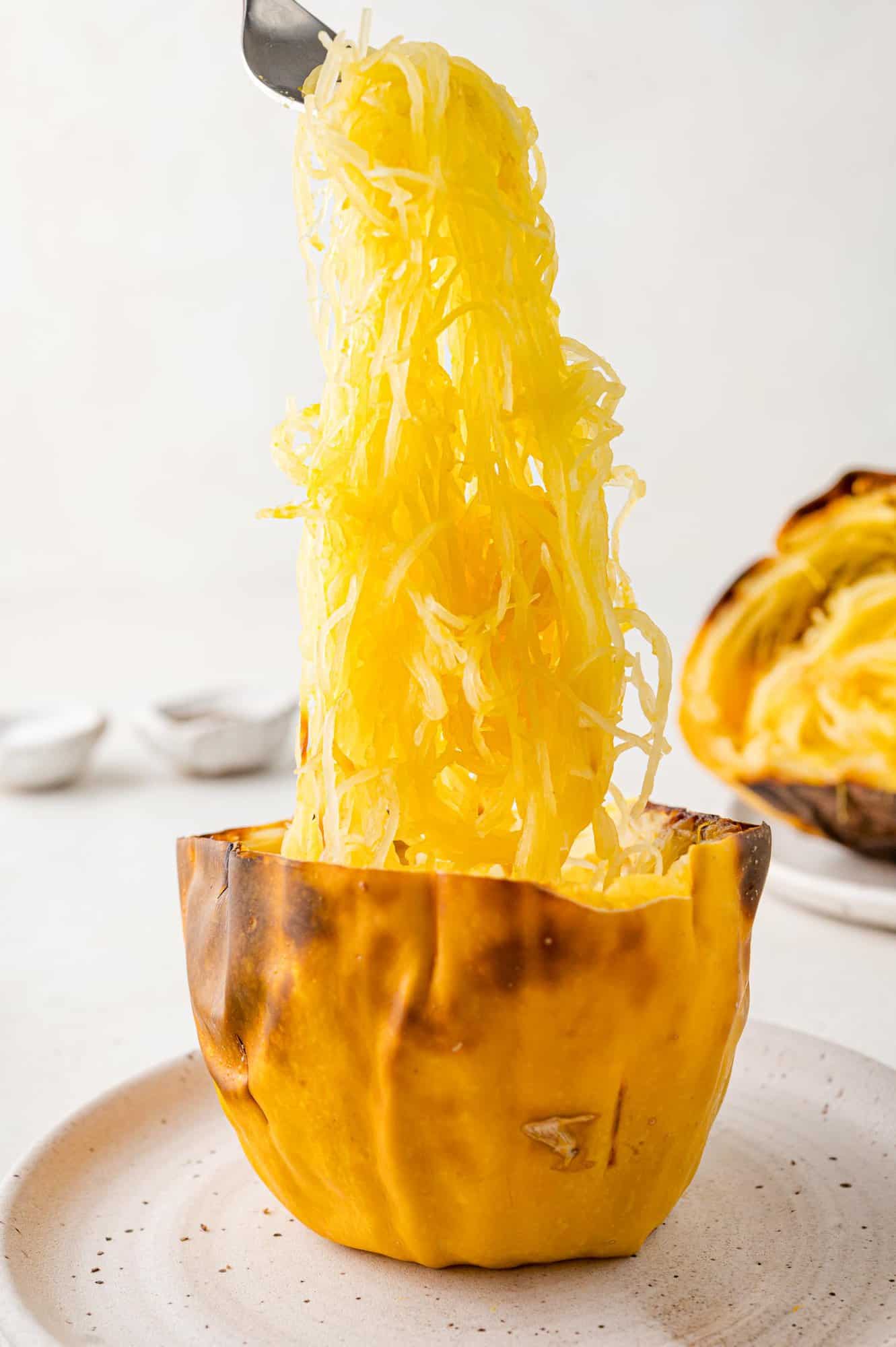
To Bake Cut in Half
Again, you can do this stem-to-end or crosswise. Stem-to-end will yield shorter strands, crosswise will yield longer strands. Scoop out the seeds, then coat the inside of the cut squash with olive oil. Season with salt and pepper.
Set the squash cut-side-down on the prepared baking sheet. Roast until a knife slides in easily, or for about an hour.
Let the squash cool until it’s safe to handle, then separate the flesh into strands with a fork.
If I don’t feel like messing with the rings, this is always my next option and the method I use to cook many types of squash. It yields slightly soggier squash than with the baked rings. Choose this method if you’re planning on stuffing the squash after it’s baked.
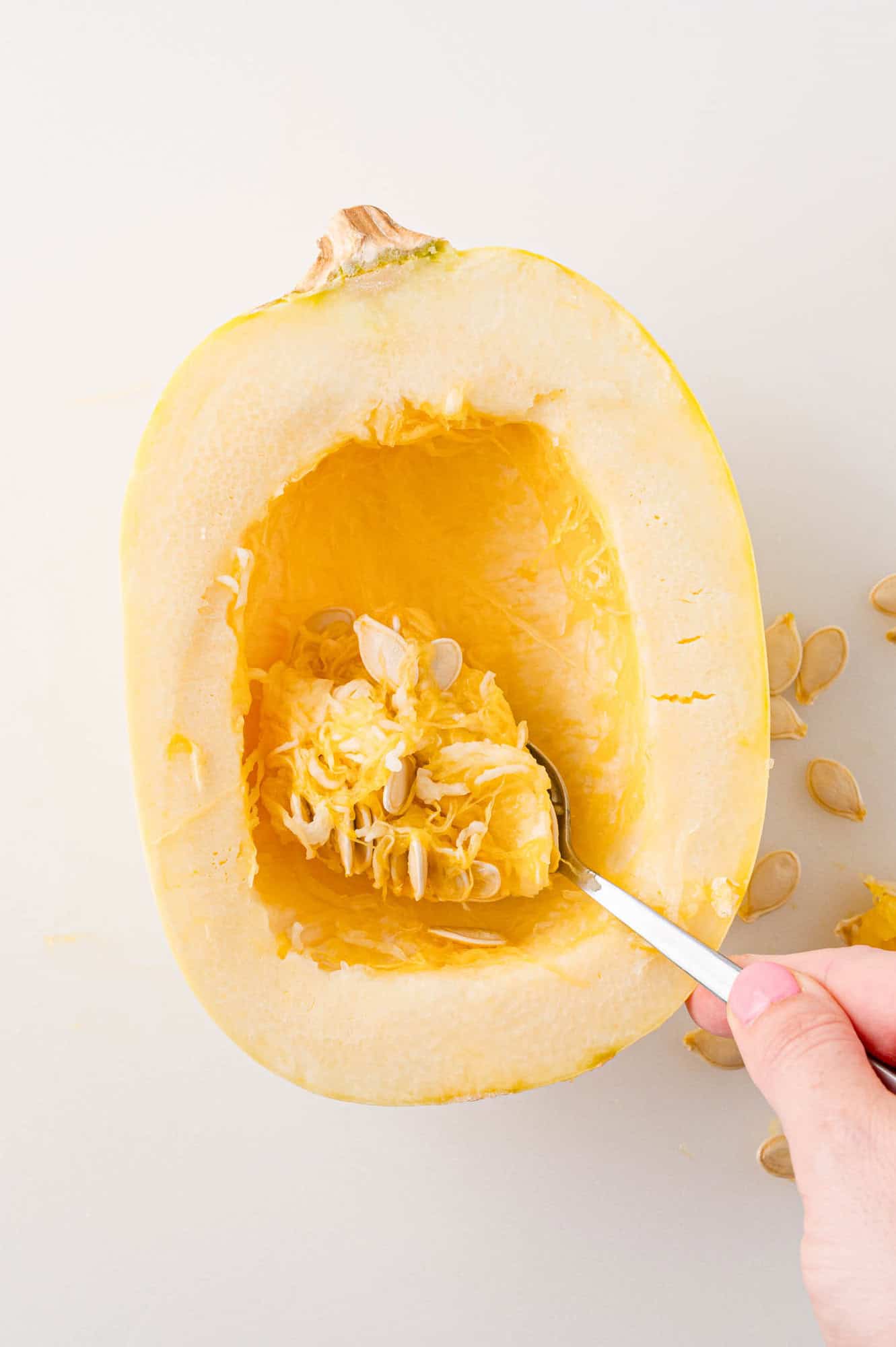
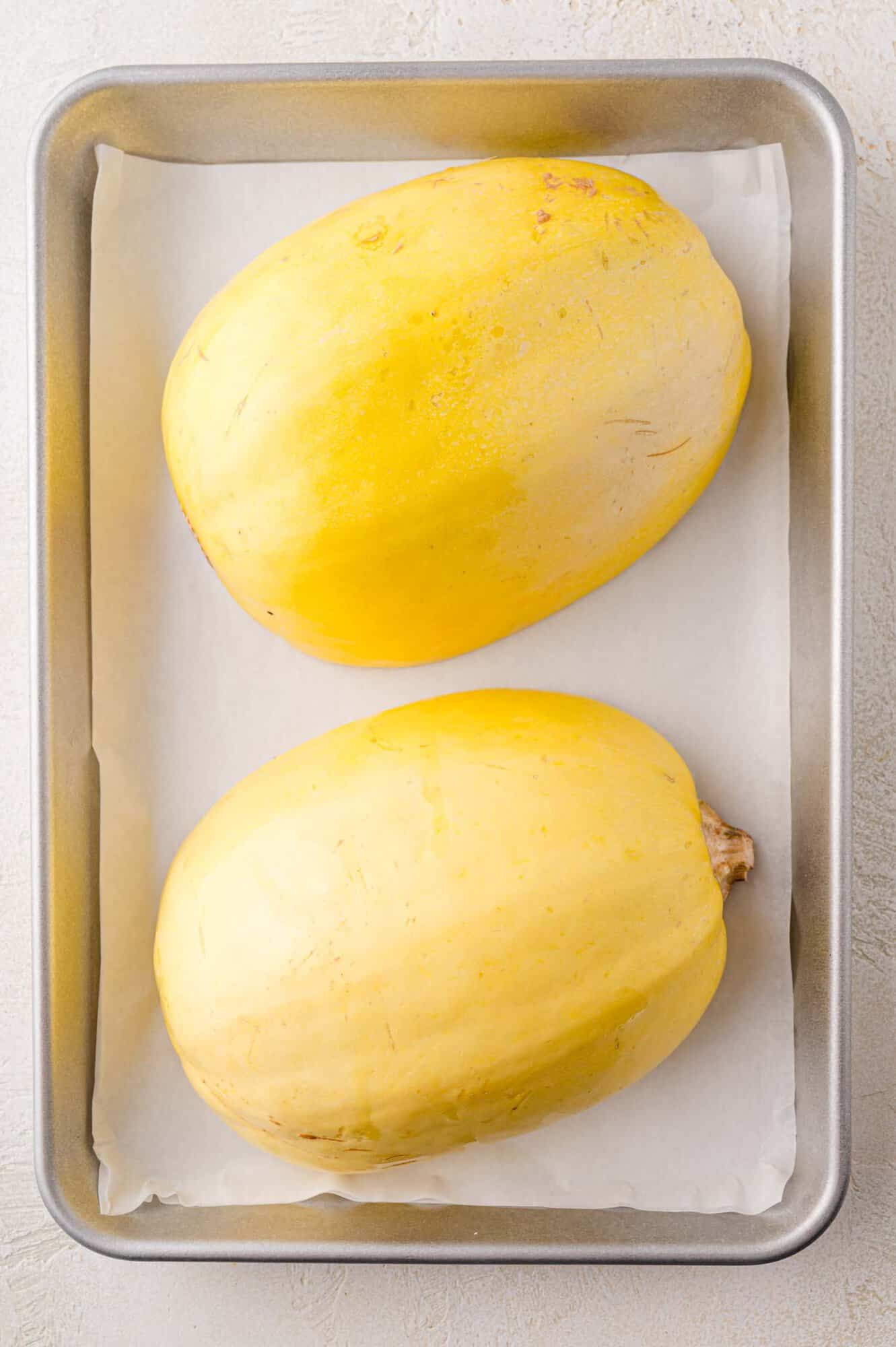
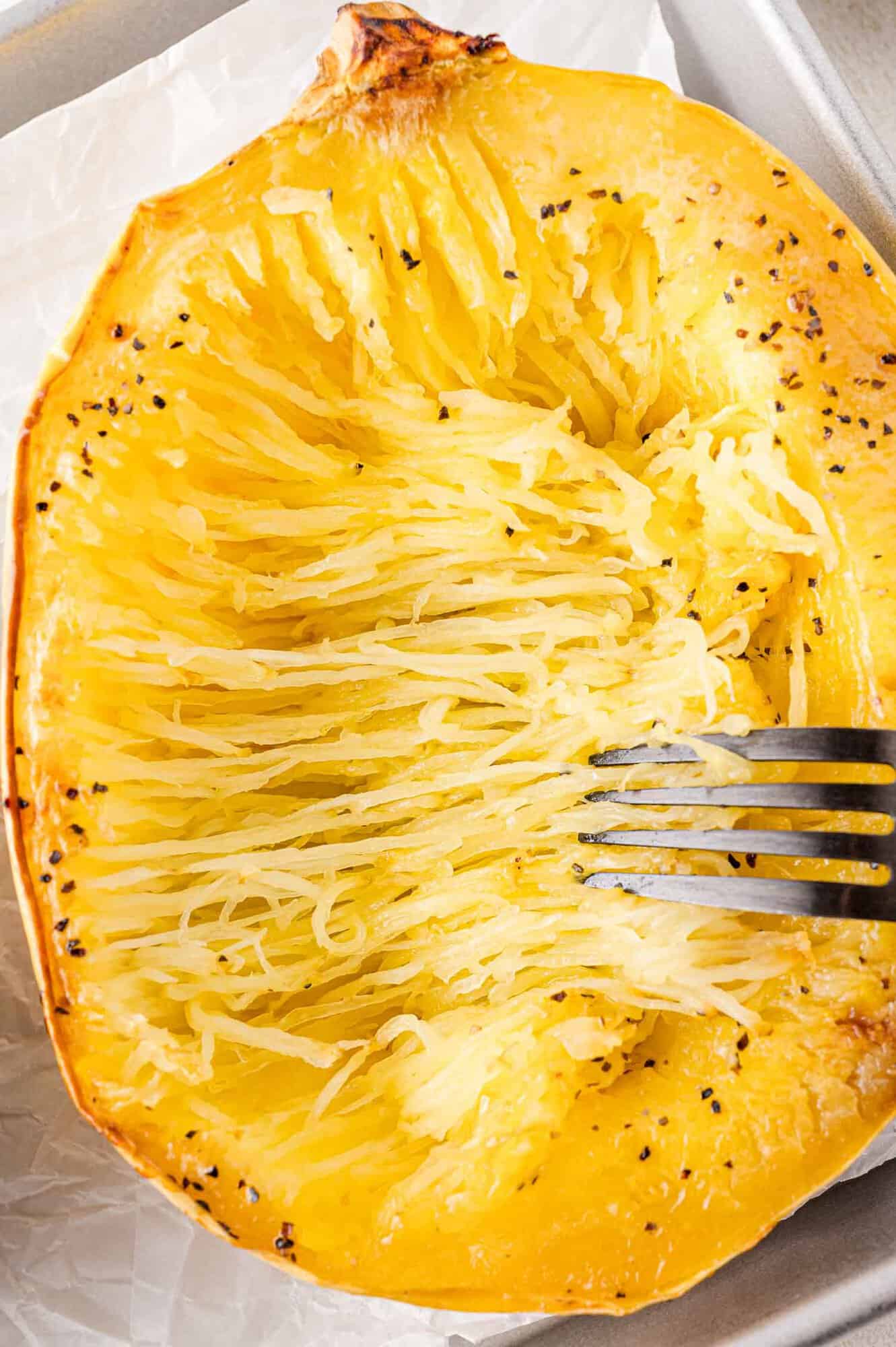
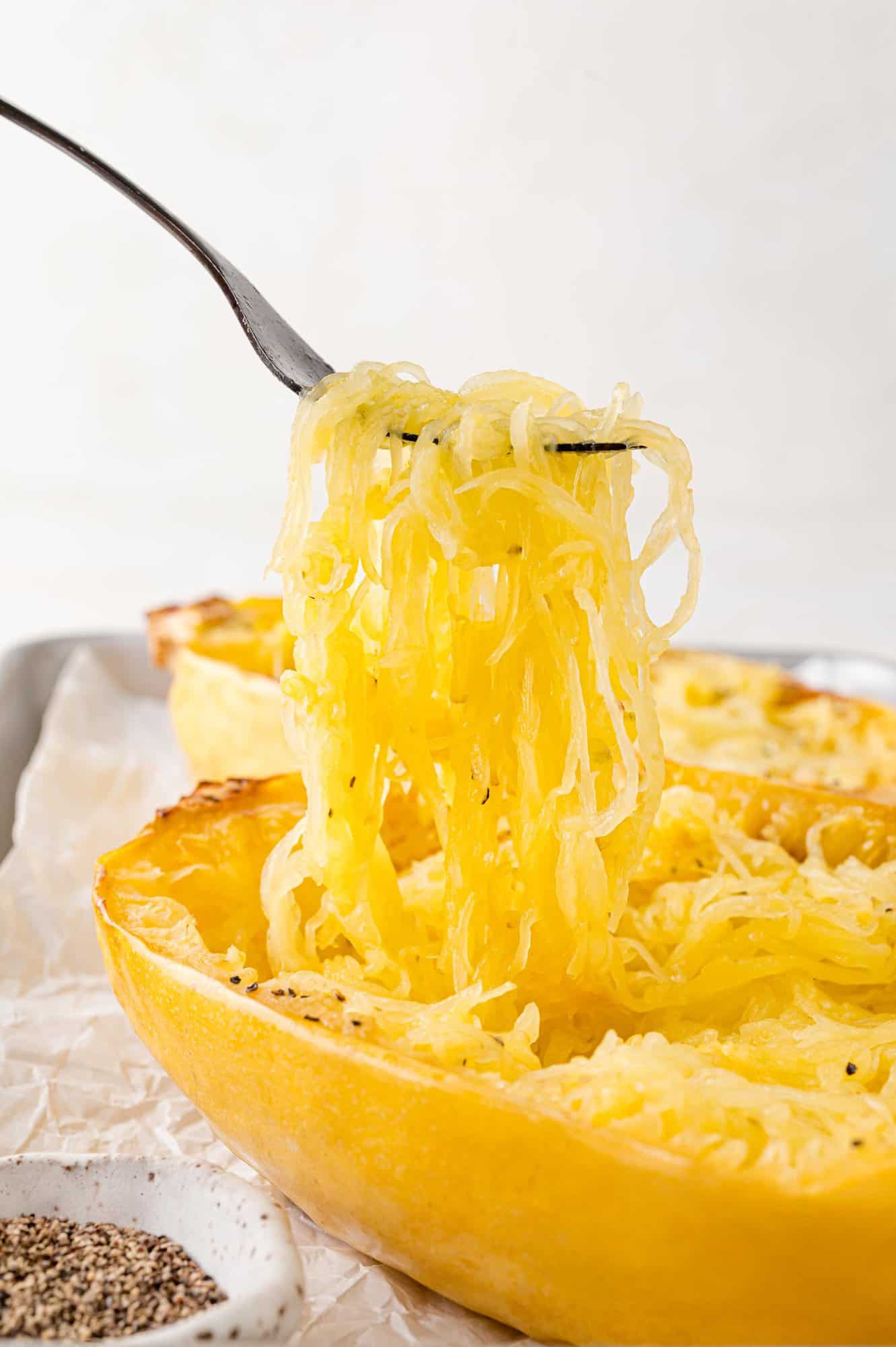
Serving Suggestions
Spaghetti squash is a blank slate, just like normal spaghetti! You can try serving your cooked spaghetti squash with an easy turkey bolognese to start, but here are more options:
- Vegan Bolognese
- Spaghetti Sauce with loads of tomatoes and basil, slow simmered on the stove
- Arugula Pesto (nut-free), Basil Pesto, or Cilantro Pesto
- Tomato Cream Sauce
- Cauliflower Alfredo Sauce
- Chicken Fajita Stuffed Spaghetti Squash: Baked squash halves are stuffed with all the fajita fixings, and broiled briefly.
- Pizza Stuffed Spaghetti Squash: Same as above, but with pizza toppings.
Refrigerate: Cooked spaghetti squash will keep for about a week stored in an airtight container in the refrigerator.
Freeze: Cooked spaghetti squash can be frozen for six months or more. After you bake the squash, remove the strands from the peel. Place the squash into a colander set over a bowl to drain. Cover, refrigerate, and let the squash strands drain at least 12 hours (overnight). Scoop the squash into freezer bags, flatten slightly, label, and freeze. To use, thaw it in the refrigerator overnight. It may not even take that long to thaw, depending on how you packaged it.
Reheat: You can eat spaghetti squash cold or at room temperature or heat it up in the microwave or a skillet set over medium heat.
More Basic Veggie Recipes
How To Cook Spaghetti Squash

Ingredients
- 1 spaghetti squash, scrubbed clean
- 1 tablespoon olive oil
- salt and pepper, to taste
Instructions
To Bake Rings:
- Preheat oven to 400°F.
- Using a large sharp knife, carefully cut the scrubbed squash horizontally into 1-inch rings. Scrape the seeds out of each ring.
- Arrange squash rings in a single layer on a parchment paper-lined baking sheet. Rub the cut surface of the rings with olive oil, or spray with olive oil. Sprinkle with salt and pepper, to taste.
- Bake for 40 minutes or until tender. Let cool slightly before using a fork or your hands to scrape out spaghetti squash strands.
To Bake Whole:
- Preheat oven to 400°F.
- Use the tip of a sharp knife to prick holes all over the scrubbed squash. Place on a baking sheet and roast until tender, about 60 minutes, depending on how large the squash is. Turn the squash over halfway through cooking to ensure even cooking. To test for tenderness, poke the squash with a knife. If it goes in easily, the squash is done.
- Remove the squash from the oven and let it cool enough to handle. Using a large sharp knife, cut the squash in half. If you cut it lengthwise (from stem to end), you’ll have shorter spaghetti strands. If you cut it crosswise, you'll have longer strands.
- Remove seeds. Use a fork to separate the squash into strands.
To Bake Cut in Half:
- Preheat oven to 400°F.
- Using a large sharp knife, cut the scrubbed squash in half. If you cut it lengthwise (from stem to end), you’ll have shorter spaghetti strands. If you cut it crosswise, you’ll have longer strands. Scoop out the seeds.
- Drizzle the inside of each half lightly with olive oil, using a brush or your fingers to coat the cut halves evenly with oil. Sprinkle with salt and pepper, to taste.
- Place the squash halves cut side down on a parchment paper-lined baking sheet. Roast the squash until tender, 45 minutes to an hour, depending on how large the squash is. To test for tenderness, poke the squash with a knife. If it goes in easily, the squash is done.
- When tender, let cool enough to handle. Use a fork to separate the squash into strands.
Notes
- Cook time: Cooking time depends on which cooking method is used and how large the squash is. Spaghetti squashes can vary widely in size.
- Storage: Cooked spaghetti squash will keep for about a week stored in an airtight container in the refrigerator.
- To freeze: Cooked spaghetti squash can be frozen for six months or more. To freeze, after you bake the squash, remove the strands from the peel. Place the squash into a colander set over a bowl to drain. Cover, refrigerate, and let the squash strands drain at least 12 hours (overnight). Scoop the squash into freezer bags, flatten slightly, label, and freeze. To use, thaw it in the refrigerator.
- Alternative cooking methods: Try slow cooker spaghetti squash and Instant Pot spaghetti squash.
Video
Nutrition
Nutrition information is automatically calculated, so should only be used as an approximation.
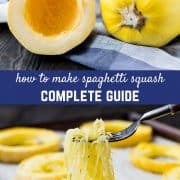
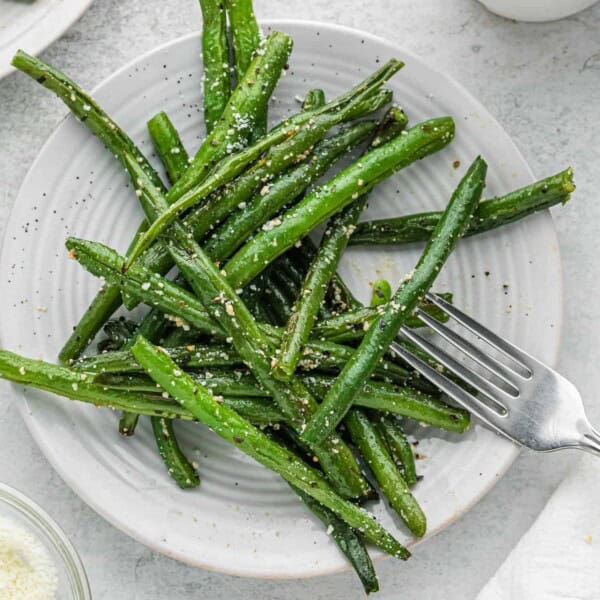

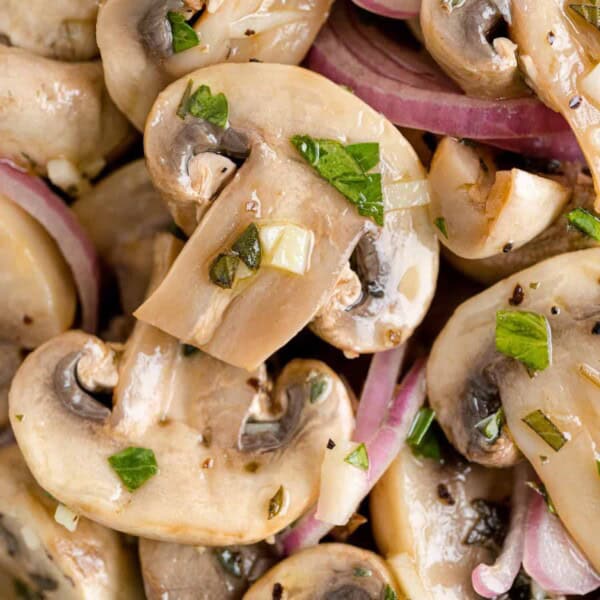
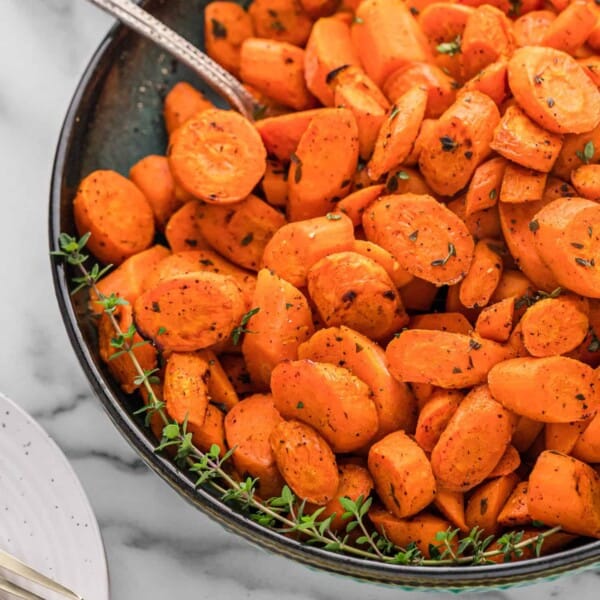


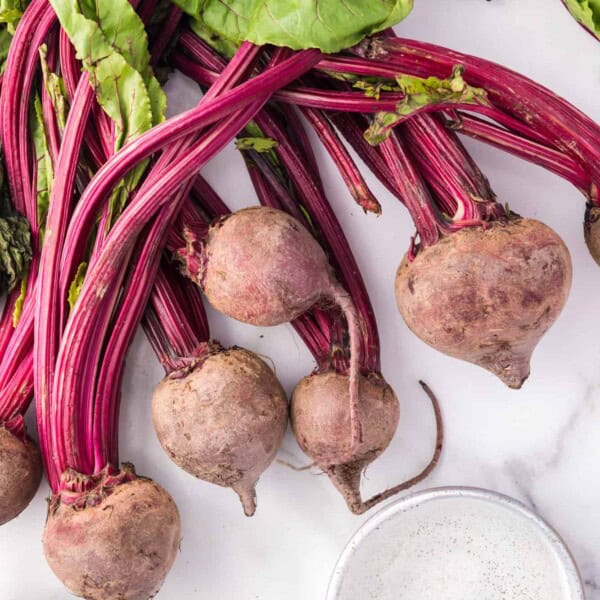
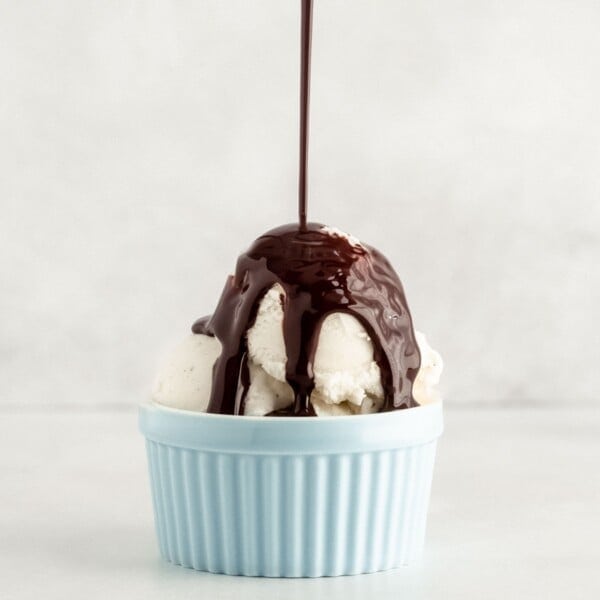









I am going to try the ring method tonight and was wondering on average how long it takes to cook using this method? Thanks!
Hi Tamara! It takes about 40 minutes to cook using that method. All the cook times can be found in the recipe card, which you can print if you’d like!
I baked in the ring method. Sliced a small section off side of squash so it wouldn’t roll around and then used a good chef knife and cutting was pretty easy. The result was great! I like that it seems less mushy this way than the other way and you can twirl up a pretty portion from the ring for serving.
Yes! I agree! I’m so glad you liked it, thanks for taking the time to come back and leave a comment!
So I’ve never liked spaghetti squash as noodle replacement because it was always soggy, gross.
Your ring baking method is the solution – brilliant. Now I want to try it this week!
It really is the best way to do it! I hope you love it!
The ring method is the best! I’m so happy to have found your recipe! To be sure, cutting this squash is the hardest part. I’ve started using my old beat up chef knife and a plastic meat mallet. Pounding the knife with the mallet makes cutting rings fast and safe.
So glad you like this method!
I’ve been searching for the best way to make spaghetti squash for sometime now and came across Rachel’s suggestion to cook in rings, and oh my! the results were perfect!!! My problem was that my squash always came out too watery or mushy. This method cooks the squash to perfection in shorter time and gives the perfect texture. I spread out onto parchment paper in single layer after cooking to get a slight crisp. Finish with whatever sauce or topping you prefer, or just eat as is- you won’t be disappointed. Thanks Rachel!
So happy to hear it worked well for you! Thanks for the comment, means a lot to me!